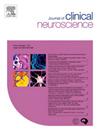术中3T磁共振成像在小儿癫痫手术中的应用、效用和安全性:10年回顾性单中心经验
IF 1.8
4区 医学
Q3 CLINICAL NEUROLOGY
引用次数: 0
摘要
背景术中磁共振成像(ioMRI)越来越多地应用于神经外科,以提高手术精度和决策。然而,由于高成本、基础设施需求和工作流程的考虑,它的实现仍然受到限制。虽然ioMRI在成人神经外科中得到了很好的研究,但在小儿癫痫手术中的作用尚不清楚。报道的挑战包括伤口并发症,感染和定位困难。本研究在一家三级专科转诊中心评估了十年来术中3T MRI在小儿癫痫手术中的应用、效用和安全性。方法本回顾性研究分析了2013年至2022年在我科进行的所有小儿癫痫手术的数据。我们回顾了患者的人口统计学特征、治疗的病理、术中3T MRI (ioMRI)的应用、ioMRI引导下持续手术的程度、术后一年的癫痫发作结果以及再次手术的需求。手术90天内记录的术中mri相关并发症也被评估。结果共125例小儿癫痫患者接受手术治疗。107例(85.6%)患者行手术切除,18例(14.4%)患者行手术断开。他们的总体中位年龄为10岁(范围0.5-19岁)。总共有108例(86.4%)患者接受了ioMRI手术。其中91例(84.3%)手术切除,17例(15.7%)手术断开。108例ioMRI患者中56例(51.9%)返回手术室,91例中45例(49.5%)进一步切除,17例中11例(64.7%)完全断开。108例患者中有13例(12%)在另一个疗程中再次手术。总共有17例(13.6%)患者没有进行ioMRI手术,其中16例(94.1%)为切除手术,1例(5.9%)为断开手术;其中3例(17.6%)术后再次手术。ioMRI手术的并发症发生率为3.7%。无伤口愈合障碍、体位相关损伤或麻醉相关并发症。虽然这项技术可能会带来一定的后勤和财政挑战,但我们观察到,与没有ioMRI的手术相比,ioMRI引导下的儿童癫痫切除手术的再手术率和并发症率较低。这些发现需要通过更大的、多中心的研究来证实,以更好地确定ioMRI在小儿癫痫手术中的作用。本文章由计算机程序翻译,如有差异,请以英文原文为准。
Application, utility and safety of intraoperative 3T magnetic resonance imaging in pediatric epilepsy surgery: A 10-year retrospective single-center experience
Background
Intraoperative magnetic resonance imaging (ioMRI) is increasingly used in neurosurgery to enhance surgical precision and decision-making. However, its implementation remains limited due to high costs, infrastructure demands, and workflow considerations. While well studied in adult neurosurgery, the role of ioMRI in pediatric epilepsy surgery is less clear. Reported challenges include wound complications, infections, and positioning difficulties. This study evaluates the application, utility, and safety of intraoperative 3T MRI in pediatric epilepsy surgery over a ten-year period at a tertiary specialized referral center.
Methods
This retrospective study analyzed data from all pediatric epilepsy surgeries performed between 2013 and 2022 in our unit. We reviewed patient demographics, the treated pathologies, the application of intraoperative 3T MRI (ioMRI), the extent of continued ioMRI-guided surgery, seizure outcomes at one year postoperatively, and the requirement for reoperation. Intraoperative MRI-related complications documented within 90 days of surgery were also assessed.
Results
Altogether, 125 pediatric epilepsy patients underwent surgery. Resections were performed in 107 (85.6 %) and disconnection procedures in 18 (14.4 %) patients. Their overall median age was 10 years (range 0.5–19 years). In total, 108 (86.4 %) patients underwent surgery with ioMRI. Of these, 91 (84.3 %) had resection and 17 (15.7 %) had disconnection surgery. Of the 108 patients with ioMRI 56 (51.9 %) returned to theater, 45 (49.5 %) out of 91 for further resection, and 11 (64.7 %) out of 17 to complete disconnection. Thirteen (12 %) of the 108 patients were reoperated upon later in another session. In total, 17 (13.6 %) patients had surgery without ioMRI, 16 (94.1 %) of these for resection and 1 (5.9 %) for disconnection surgery; of these 3 (17.6 %) were reoperated upon later in another session. The complication rate for surgeries performed with ioMRI was 3.7 %. There were no wound healing disorders, position-related damages, or anesthesia-related complications.
Conclusions
While the technology may present certain logistical and financial challenges, we observed a lower rate of reoperations and a low complication rate in ioMRI-guided resective epilepsy surgeries in children compared to surgeries without ioMRI. These findings require confirmation through larger, multi-center studies to better define the role of ioMRI in pediatric epilepsy surgery.
求助全文
通过发布文献求助,成功后即可免费获取论文全文。
去求助
来源期刊

Journal of Clinical Neuroscience
医学-临床神经学
CiteScore
4.50
自引率
0.00%
发文量
402
审稿时长
40 days
期刊介绍:
This International journal, Journal of Clinical Neuroscience, publishes articles on clinical neurosurgery and neurology and the related neurosciences such as neuro-pathology, neuro-radiology, neuro-ophthalmology and neuro-physiology.
The journal has a broad International perspective, and emphasises the advances occurring in Asia, the Pacific Rim region, Europe and North America. The Journal acts as a focus for publication of major clinical and laboratory research, as well as publishing solicited manuscripts on specific subjects from experts, case reports and other information of interest to clinicians working in the clinical neurosciences.
 求助内容:
求助内容: 应助结果提醒方式:
应助结果提醒方式:


